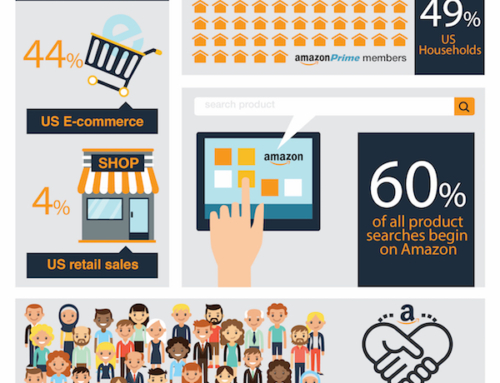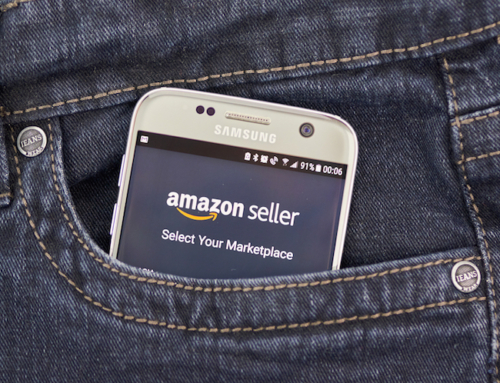The 4P’s of Marketing Are Irrelevant and Aren’t About Marketing
The 4P’s of marketing have become a well-known framework. Even non-marketing professionals have heard of it, although they don’t really know what it is. Most marketers don’t know what it is either. The 4P’s of marketing framework is irrelevant in the digital age.
In this era of Amazon, markets are so saturated and consumers so inundated with brand choices that an industry has cropped up around unboxing stuff on YouTube. Think about that for a second. If the folks who make money reviewing products online barely have time to slice through the tape and give their opinion on the packaging, what does that say about the attention span of your customers? Simply this: People don’t shop around for what they don’t already love. Nobody’s got that kind of time.
Teaching The 4P’s of Marketing Framework
Back when I was an undergrad and again in grad school, the 4Ps of marketing, was sold to me in the same way it’s sold to thousands of marketing students every year, as our discipline’s fundamental principle. As a comedy routine, this one kills me. But as a framework for selling in the real-world? I didn’t buy the 4Ps of marketing when I was a student. After decades of professional experience, I can tell you that conclusively that the 4Ps of marketing aren’t about marketing at all.
With their concentration on the eponymous Product, Price, Promotion, and Place, the 4Ps of marketing put focus on technology, not customers. There might be something redeemable about the model if it put emphasis on the differentiators that set a product apart, but the question of why is a customer going to be better off buying from me than a competitor is barely addressed in the 4Ps.
Promotion
Consider, for example, the difference between a cup of coffee at Dunkin’ Donuts and a similar brew at Starbucks. Both companies sell a product called “coffee”, but nothing in that bare fact suggests that a cup from one is preferable to a cup from another.
Promotion might be expected to make that case to the customer; in reality, neither company centers their promotions around coffee. It’s sold as an add-on at Dunkin’. At Starbucks, it’s part of an experience package, alongside the soundtrack albums and breakfast sandwiches you see so attractively displayed.
Place
Place is irrelevant to the question of what sets each brand’s coffee apart, given how easy it is to find both in cities and suburbs and just off the highway. What about price? It’s true that the price of a Dunkin’ Donuts coffee is significantly different from a similarly-sized coffee bought at Starbucks. However, for reasons I’m about to go into, any company pointing to a price as a key differentiator is quickly going to find themselves out of business.
Price
Price doesn’t win brand wars. If it did, Hilton would be only one hotel chain, McDonald’s would be the only fast food, and Swanson would have the TV dinner section all to itself. At the end of the day, however deep you cut your margin, somebody can always turn out knock-offs of your product cheaper than you can put out the real deal.
Consider Rolex. They’re certainly not the only company who knows how to make a nice watch. If price was all that mattered, you’d expect Rolex to have been driven out of business decades ago. Yet their name is still synonymous with luxury all over the world.
How did Rolex stay viable in a field of cheaper competitors? If you’ve ever shopped for a Rolex, you know it wasn’t by lowering their prices. In fact, the Rolex brand image requires that they keep prices high. There’s a small and very select group of companies that compete with Rolex, and none of them do it on price. Do you think if Cartier sent out a 20% off Groupon, all the Rolex customers would switch their allegiance? Of course not. Those folks are used to paying a premium for quality and the cachet that goes along with it. They’re not going to be swayed by a price drop.
Luxury watches are marketed to a niche audience, true. But purchasing decisions on products from housewares to hamburgers are made in the exact same way. Customers have reasons outside of product, promotion, price and place for settling on a certain brand, and they generally stick with the brands they know until a company gives them a reason to change. Value can be that reason, but price is not the same as value. To estimate value, you have to look at the total impact a product has on a person’s life. Price alone doesn’t motivate people to part with their money. That whole concept is crazy, right? A customer would have to be dangerously unbalanced to buy a product that does nothing to meet their wants or needs, at any price.
The 4P’s of Marketing and Sales
Product, price, promotion, and place don’t make sales. As I mentioned earlier, being innovative will help a product sell, but even a one-of-a-kind gizmo can’t sell itself. Customers look for features and buy benefits. Without a connection to the customer, marketers have no way to communicate features and benefits.
As I saw time and again at my bespoke catering business, great companies solve problems for their customers. Customers, in turn, reward great companies with repeat sales. Successful marketing, therefore, involves about educating the customers on what solutions a company can provide. Where in the 4Ps of marketing is the customer? Nowhere. That’s why I say the 4Ps aren’t about marketing. They don’t sell solutions, and they don’t inspire loyalty or repeat sales.
Another word for repeat sales is retention. If you’re a kid running a lemonade stand and you can only get one bag of lemons, maybe you don’t care about retention. That’s literally the only example I can think of where retention might not matter. Dunkin’ Donuts, Starbucks, and all the other big name brands got where they are by knowing how to keep customers coming back.
Where The 4P’s of Marketing Break Down
I’ll give you another example of a company that knows how to ENGAGE with repeat buyers: Amazon. They did a great job with the Dash button. If you don’t know what that is, picture a keychain-sized piece of plastic with a brand name on it, like Tide or Peet’s Coffee. Half the keychain is taken up by a button hooked up to your WiFi. You stick one of these things next to your washing machine or percolator, and every time you’re close to running out of whatever you need, you click the button to reorder. No trips to the supermarket or Walmart necessary, no reason to hunt down a sale. One press of the button, and two days later, a box shows up on your front porch.
The Dash button is a double retention machine. It locks the customer into a brand—Tide, Peet’s, whatever—and a retailer, Amazon. If you’re ever looking for an example of a “win-win” to put in the dictionary, there it is.
How can you beat convenience like the Dash button? That’s a serious question. Whoever brings a better way to market might as well have a license to print money. Here’s the point. If you were an executive sitting in a marketing meeting at Amazon, and the marketing model you’d been taught was the 4Ps, something like the Dash button would look like a one-off gimmick at best. It’s not much of a product. It says nothing about price. It’s not a promotion, since you’ve got to get the buttons into people’s homes before they start selling for you. The same can be said about place. It’s only when you set aside the 4Ps of marketing that the brilliance of the idea starts to show through.
In the data-poor age, marketing textbooks could get away with stating the obvious, even the obviously wrong, because there wasn’t enough data to call them on it. Yes, when you look at a successful marketing scheme you’re going to see a product, with a price, being promoted, in a place. But now that we have empirical data about customer buying habits, it’s time to dispense with the illusion that the combination of those factors even begins to touch on what marketing actually is.
Marketing is what you do to connect with customers so they’ll buy your product. Success in marketing requires that you THINK ENGAGE THRIVE.










[…] Customers today have more power over brands than ever before. They can post their opinions on online forums. These forums are influential and have a worldwide reach. There are two sides to this coin. Open communication allows customers to interact with your brand. […]
[…] brands like Netflix, Spotify, and Amazon have successfully implemented AI algorithms into their marketing strategies. Netflix uses AI algorithms to analyze customer behavior to recommend new movies and TV shows. […]